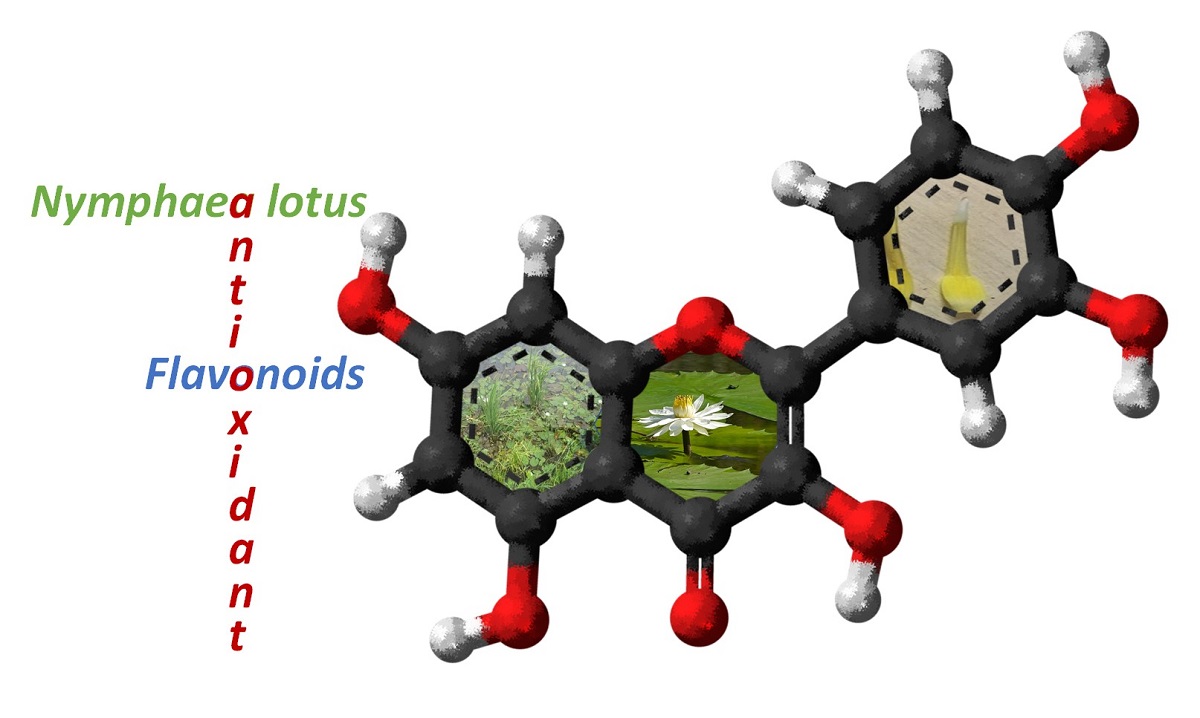Nymphaea lotus L. is the medicinal plant that has long been used as food, cosmetic and traditional medicines in Africa and Asia since the ancient time. Its flavonoids and other interesting phytochemical compounds from rhizome, leaf, and the whole flowers have been reported in the previous published researches. However, stamens, which are essential for reproductive functions, may also represent new alternative sources of potential antioxidant flavonoids as investigated in this study. The innovative green chemistry method i.e. ultrasound-assisted extraction (USAE) as well as macroporous resin (MPR) purification procedure were employed in this current research. The optimal ultrasound-assisted extraction condition is 90 % (v/v) aqEtOH with 34.65 khz ultrasonic frequency and 46 minutes of extraction time. Comparing with heat reflux extraction (HRE) conventional method, the significant gain of 1.35 total flavonoids content was obtained using optimized USAE conditions, jumping to 2.80 when this USAE associated with MPR purification. Not only in vitro cell free antioxidant activity of N. lotus stamen extracts, but also in cellulo antioxidant investigation using yeast model showed the same trend to indicate that the best antioxidant flavonoid can be found in USAE coupled with MPR purification. Moreover, the key antioxidant genes expression in yeast model such as SIR2 and SOD2 were also expressed at the highest level in yeast cell treated with the extract from USAE together with MPR purification. Consequently, it can be seen that the USAE combined with MPR purification can help to enhance the flavonoids antioxidant potential of the stamens extract from this medicinal species.

